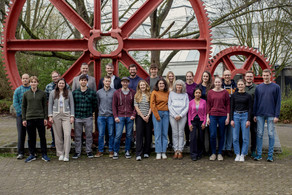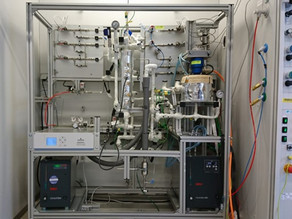Identification of Mass Transfer Limitations by Kinetic Modeling of a Technical-Scale Trickle Bed Reactor for the Hydrogenation of Viscous Aromatics
H. Held and H. Freund
Ind. Eng. Chem. Res. 2024, 63, 1, 147–162
Abstract
This study aimed at developing a reactor model for elucidating the interplay between mass transfer and reaction kinetics in trickle bed reactors with metal nanoparticles supported on metal oxide as the eggshell catalyst. The investigation encompassed laboratory-scale reactor design and refined model development for an exemplary hydrogenation reaction of high-molecular-weight aromatics under high pressure (7−9 MPa) and moderate temperature (90−120 °C) conditions. A trickle bed loop reactor was designed for unbiased kinetic measurements. For analysis, GC-FID, UV−vis, and NMR techniques were used. A simplified activation energy estimation method along with an axial resolved reactor model including a resolved pore diffusion model were presented. The pore diffusion of hydrogen was identified as a bottleneck under various conditions. The coefficients for modeling the mass transfer were estimated using a neural network approach from the literature. The average pore effectiveness was estimated resulting in values from 11 to 24% for an industrial standard catalyst of 200 μm shell depth in the set temperaturerange of this work.




